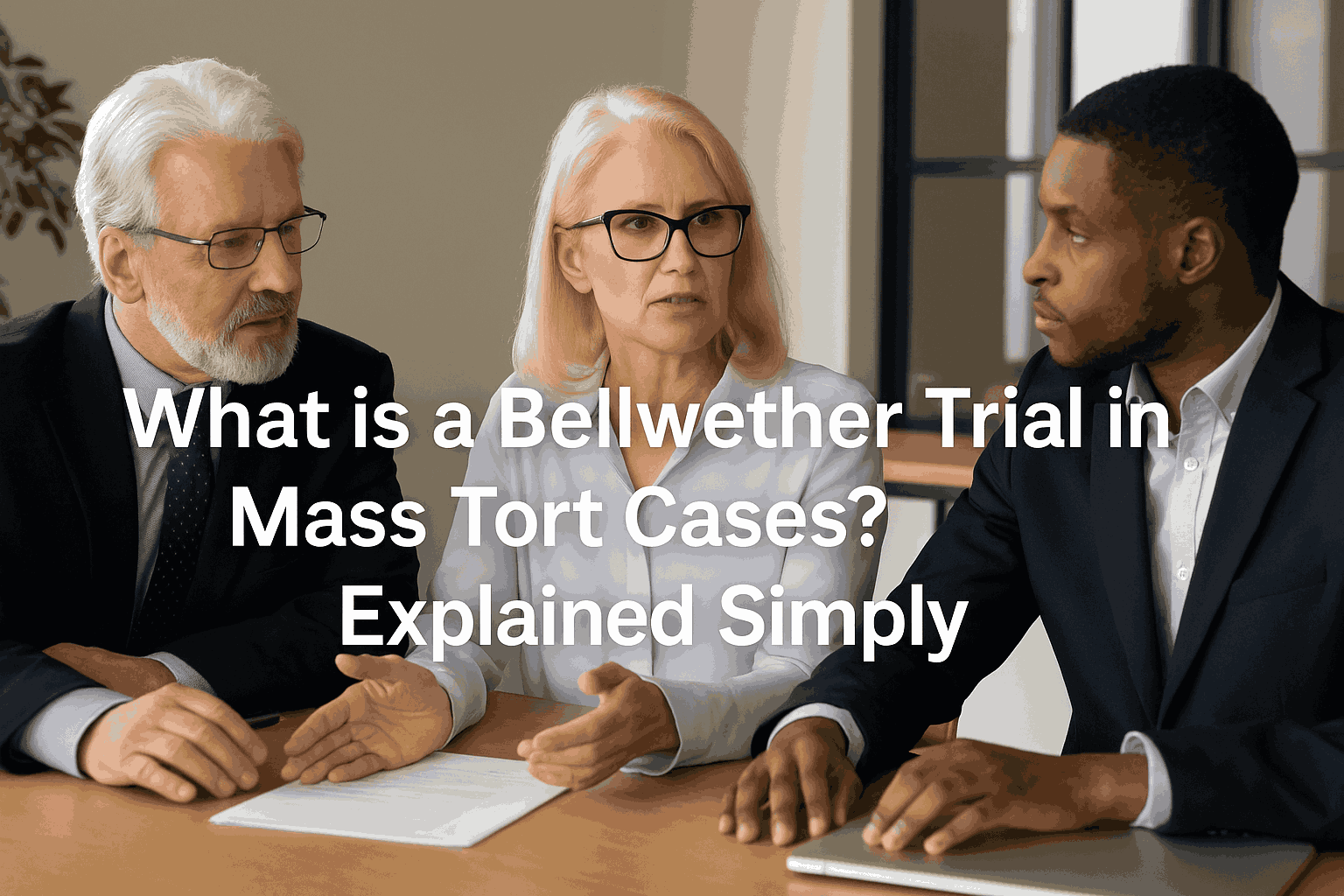
If you’ve ever wondered how courts handle thousands of lawsuits against a single company—like when a drug causes unexpected harm or a product fails across the country—the answer often starts with a bellwether trial.
In simple terms, a bellwether trial in mass tort cases is a test case. It helps everyone involved—plaintiffs, defendants, and judges—get a clearer picture of how juries might react to key evidence and legal arguments. Let’s break it all down without the legal jargon.
What is a Bellwether Trial?
The word “bellwether” comes from an old farming term. A bellwether sheep wears a bell and leads the flock, helping shepherds guide the rest. In the courtroom, a bellwether trial plays a similar role. It leads the way for the rest of the lawsuits.
In mass tort litigation, there are often hundreds or thousands of plaintiffs who have experienced similar harm—like injuries from the same drug, defective product, or environmental hazard. Trying every case individually would take years. That’s where bellwether trials come in.
Why Bellwether Trials Are Used
Courts and lawyers use bellwether trials to:
- Test the Waters: See how a jury might respond to certain facts, medical reports, or expert witnesses.
- Estimate Settlement Values: If a jury awards large damages in early cases, the defendant may offer larger settlements to avoid further loss.
- Narrow Legal Issues: Identify which arguments work and which don’t, helping refine future strategies.
- Save Time and Costs: These trials streamline thousands of cases into a few manageable ones.
Rather than treating each lawsuit like a separate battle, bellwether trials allow the court to set a pattern that influences all the others.
How Are Bellwether Cases Selected?
A bellwether trial isn’t chosen at random. Instead, judges work with both sides to pick a few cases that are typical or representative of the larger group.
They ask:
- Does this plaintiff have the same type of injury as others?
- Were they exposed to the product or event in a similar way?
- Is the timeline or diagnosis common to other plaintiffs?
The idea is to choose lawsuits that best reflect the larger group’s claims, so the results can offer useful insights for all.
Are Bellwether Trials Legally Binding?
This is important: the outcome of a bellwether trial only applies to that specific plaintiff and defendant. It does not automatically decide the fate of the other lawsuits.
However, if the verdict is significant—especially if a jury awards a large sum—it creates serious pressure on the defendant. The company may choose to settle many of the remaining cases rather than risk more losses. Similarly, if the bellwether trial favors the defense, plaintiffs may be more open to negotiating lower settlements.
In this way, bellwether trials act as a reality check for both sides.
Bellwether Trial Example
Imagine a mass tort case involving a popular heartburn medication that allegedly increases the risk of cancer. Suppose 4,000 people have filed lawsuits. Rather than try each one separately:
- The court picks 10 cases that reflect common types of injuries and exposure.
- From these, 3 or 4 are selected to go to trial first.
- If those juries rule in favor of the plaintiffs with high compensation, the company might negotiate settlements for the other 3,990 claims.
This process doesn’t just save time—it also helps bring clarity to what could otherwise be years of back-and-forth litigation.
Advantages of Bellwether Trials
| Benefit | How It Helps |
|---|---|
| Efficiency | Avoids thousands of repetitive trials |
| Predictability | Offers insight into jury behavior |
| Negotiation Leverage | Helps estimate settlement ranges |
| Legal Strategy Testing | Refines arguments and evidence presentation |
| Resource Management | Reduces legal costs for courts and clients |
Are Bellwether Trials the Final Step?
No, they’re just one step. After the bellwether phase, remaining cases may still go to trial individually. However, most are resolved through settlement discussions influenced by the bellwether results.
In rare cases, if the bellwether results are mixed—some favor plaintiffs, others favor the defense—the litigation might continue longer, or the court may order another round of bellwether trials.
Real-Life Examples of Bellwether Trials
- 3M Combat Earplugs: Thousands of military veterans sued over hearing loss from defective earplugs. Early bellwether trials resulted in large verdicts for plaintiffs, leading to massive settlement discussions.
- Johnson & Johnson Talcum Powder: Multiple bellwether cases about ovarian cancer linked to talc resulted in huge awards. This eventually pressured the company into global settlement talks.
- Roundup Weed Killer: Plaintiffs claimed Roundup caused cancer. Initial bellwether trials with billion-dollar verdicts forced the manufacturer to negotiate multi-billion-dollar settlements.
These examples show how a few early cases can determine the path of justice for thousands.
Final Thoughts
A bellwether trial in mass tort cases is not just a legal procedure—it’s a strategic tool. It helps all parties understand the strength of their cases, sets expectations, and often becomes the driving force behind mass settlements.
If you’re part of a mass tort case, knowing how bellwether trials work can give you valuable insight into what to expect, even if your own case doesn’t go to trial right away.